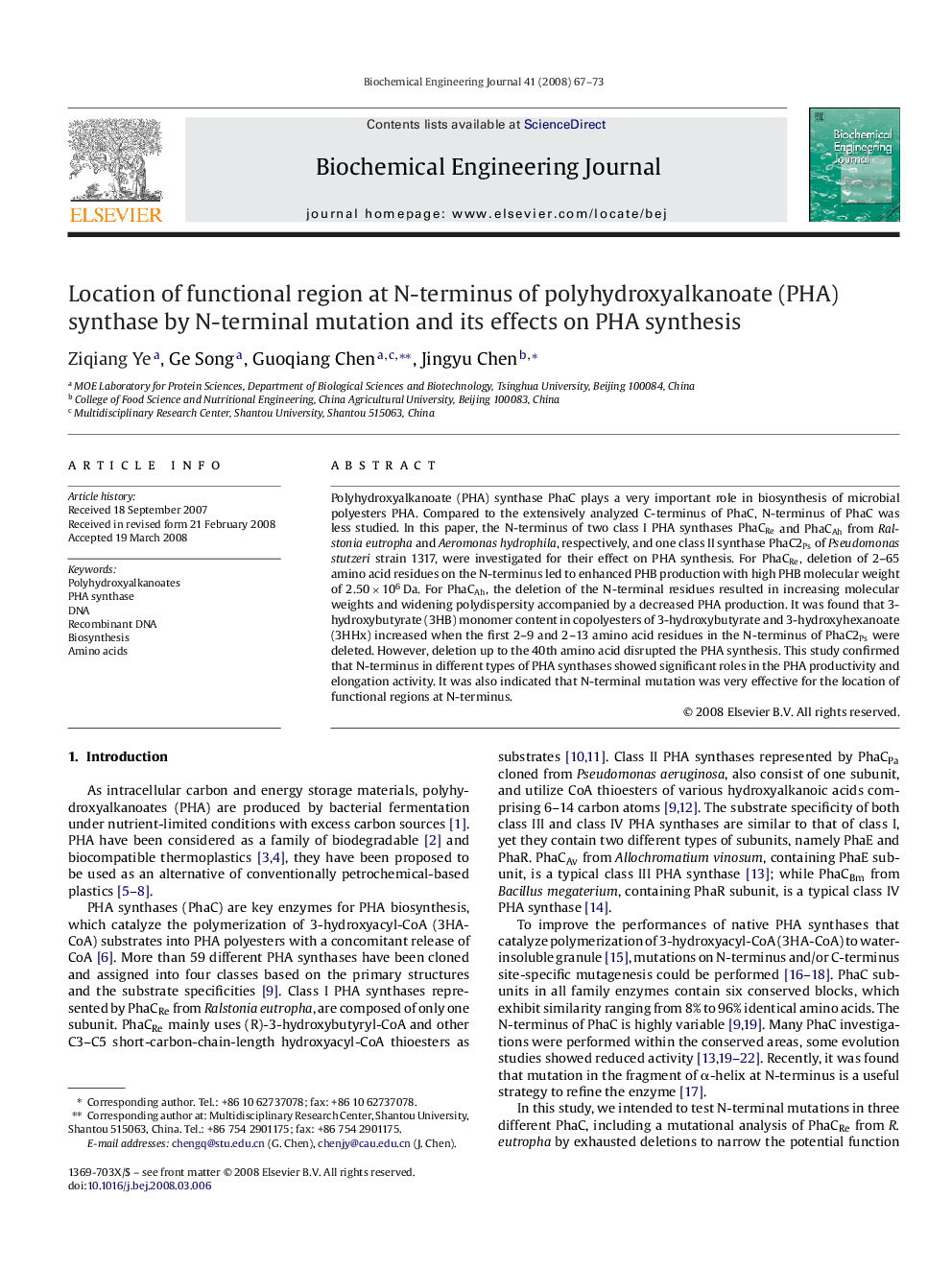| Article ID | Journal | Published Year | Pages | File Type |
|---|---|---|---|---|
| 4418 | Biochemical Engineering Journal | 2008 | 7 Pages |
Polyhydroxyalkanoate (PHA) synthase PhaC plays a very important role in biosynthesis of microbial polyesters PHA. Compared to the extensively analyzed C-terminus of PhaC, N-terminus of PhaC was less studied. In this paper, the N-terminus of two class I PHA synthases PhaCRe and PhaCAh from Ralstonia eutropha and Aeromonas hydrophila, respectively, and one class II synthase PhaC2Ps of Pseudomonas stutzeri strain 1317, were investigated for their effect on PHA synthesis. For PhaCRe, deletion of 2–65 amino acid residues on the N-terminus led to enhanced PHB production with high PHB molecular weight of 2.50 × 106 Da. For PhaCAh, the deletion of the N-terminal residues resulted in increasing molecular weights and widening polydispersity accompanied by a decreased PHA production. It was found that 3-hydroxybutyrate (3HB) monomer content in copolyesters of 3-hydroxybutyrate and 3-hydroxyhexanoate (3HHx) increased when the first 2–9 and 2–13 amino acid residues in the N-terminus of PhaC2Ps were deleted. However, deletion up to the 40th amino acid disrupted the PHA synthesis. This study confirmed that N-terminus in different types of PHA synthases showed significant roles in the PHA productivity and elongation activity. It was also indicated that N-terminal mutation was very effective for the location of functional regions at N-terminus.
